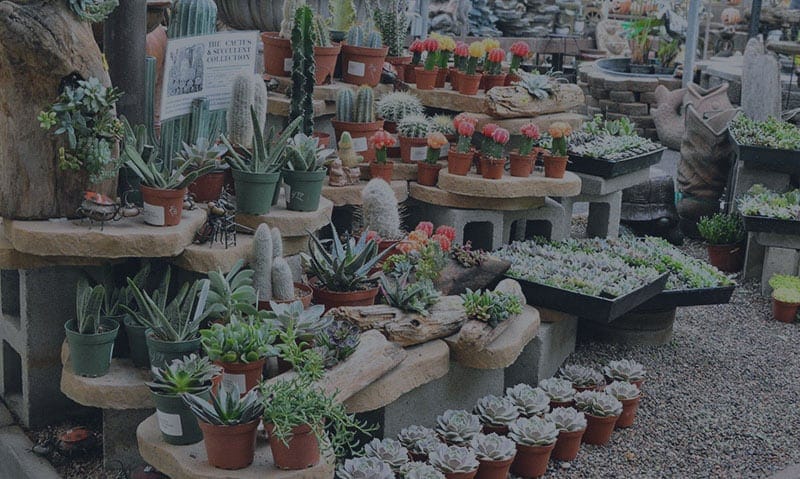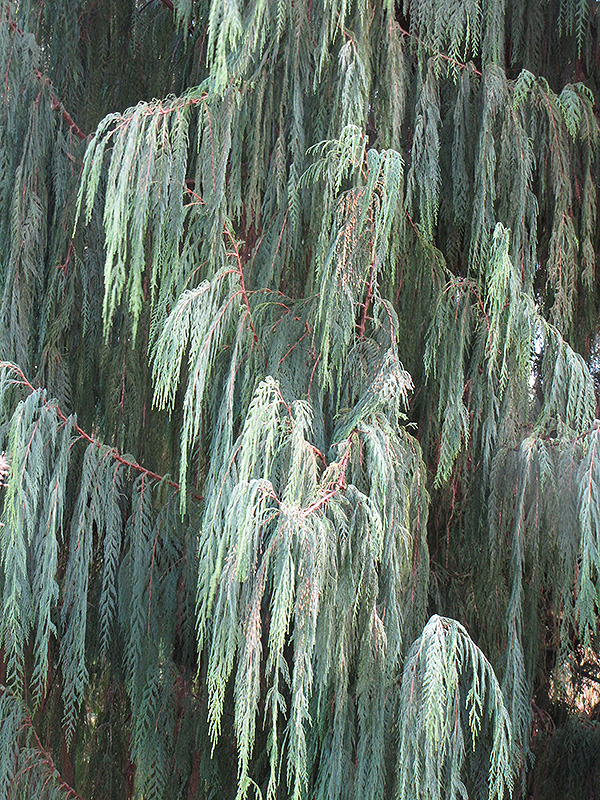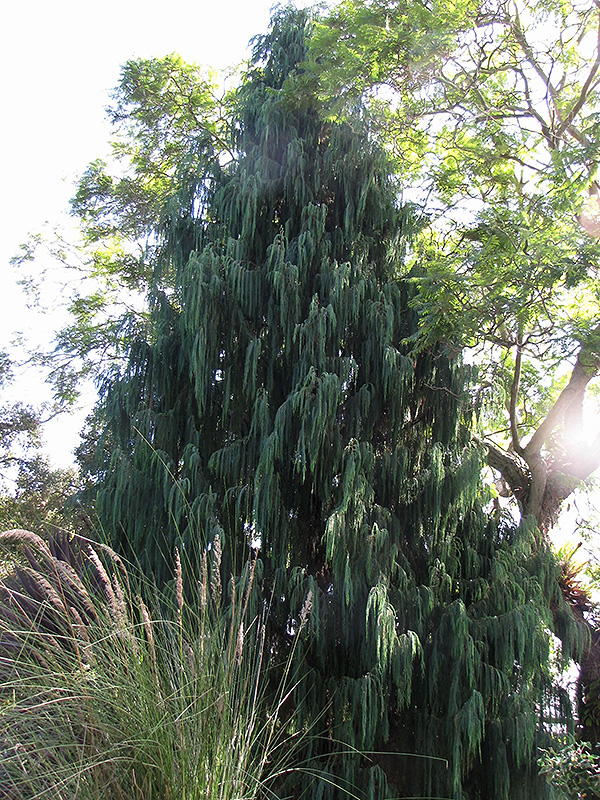Height: 60 feet
Spread: 20 feet
Sunlight:
![]()
Hardiness Zone: 9a
Other Names: Bhutan Cypress, C. himalaica darjeelingensis
Description:
This beautiful evergreen conifer has a narrowly pyramidal shape, with upright main branches that display very long pendulous branchlets bearing the beautiful blue-green fragrant foliage; give shelter as it can be easily damaged in wind
Ornamental Features
Kashmir Cypress is primarily valued in the landscape for its distinctively pyramidal habit of growth. It has attractive bluish-green evergreen foliage. The fragrant scale-like sprays of foliage are highly ornamental and remain bluish-green throughout the winter.
Landscape Attributes
Kashmir Cypress is an open evergreen tree with a strong central leader and a distinctive and refined pyramidal form. It lends an extremely fine and delicate texture to the landscape composition which can make it a great accent feature on this basis alone.
This is a relatively low maintenance tree, and should not require much pruning, except when necessary, such as to remove dieback. It has no significant negative characteristics.
Kashmir Cypress is recommended for the following landscape applications;
- Accent
- Vertical Accent
- Hedges/Screening
Planting & Growing
Kashmir Cypress will grow to be about 60 feet tall at maturity, with a spread of 20 feet. It has a low canopy with a typical clearance of 1 foot from the ground, and should not be planted underneath power lines. It grows at a medium rate, and under ideal conditions can be expected to live for 60 years or more.
This tree should only be grown in full sunlight. It prefers dry to average moisture levels with very well-drained soil, and will often die in standing water. It may require supplemental watering during periods of drought or extended heat. It is not particular as to soil pH, but grows best in sandy soils. It is somewhat tolerant of urban pollution, and will benefit from being planted in a relatively sheltered location. This species is not originally from North America.



